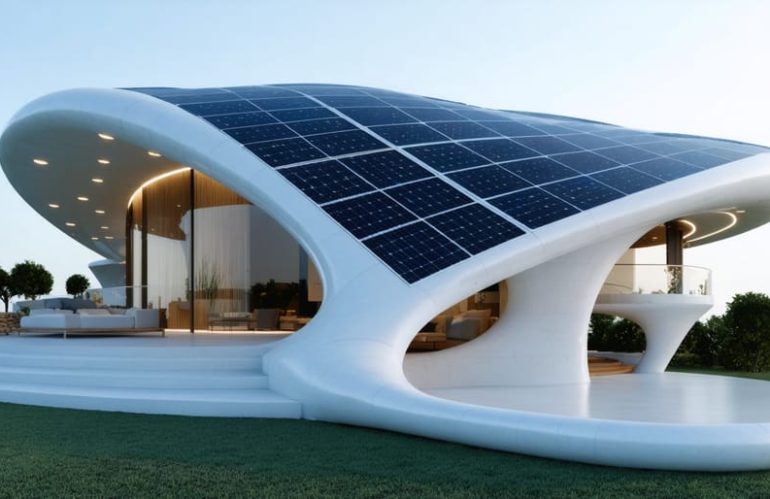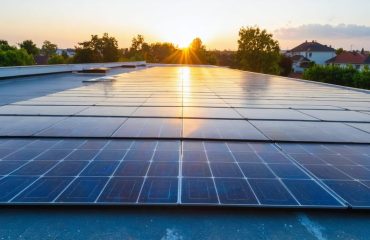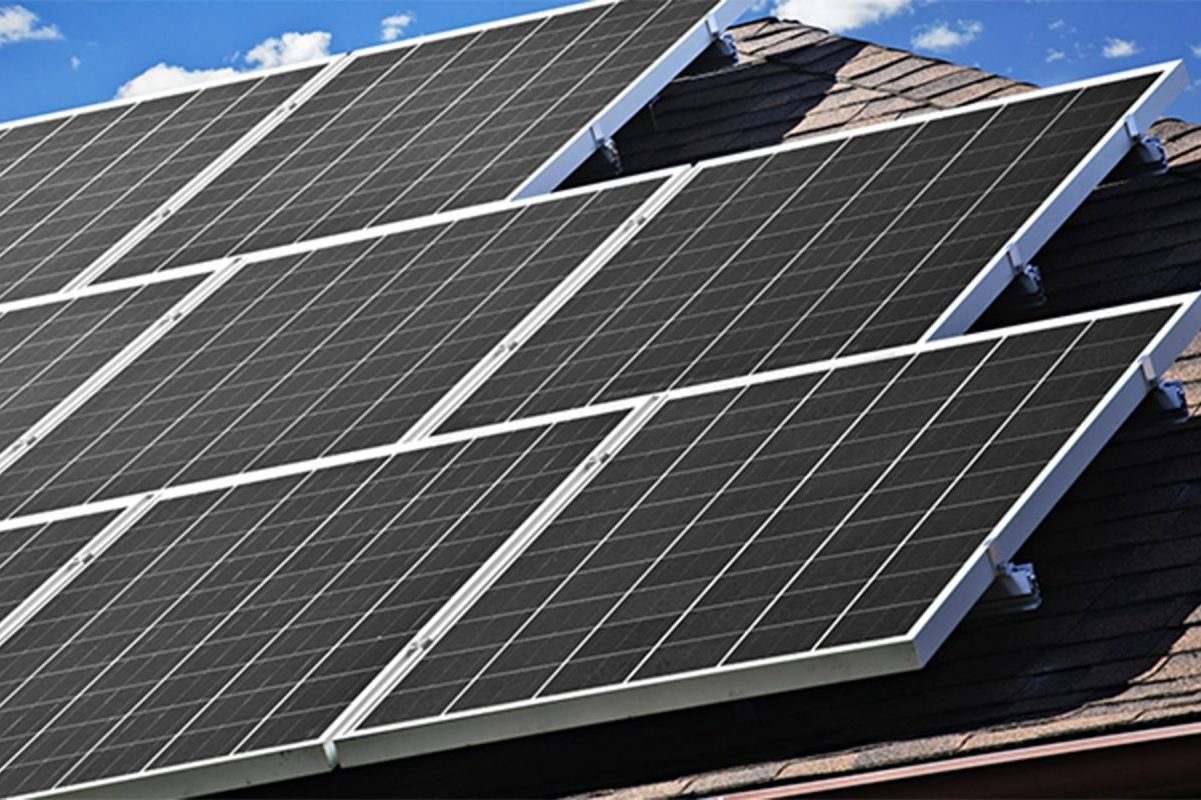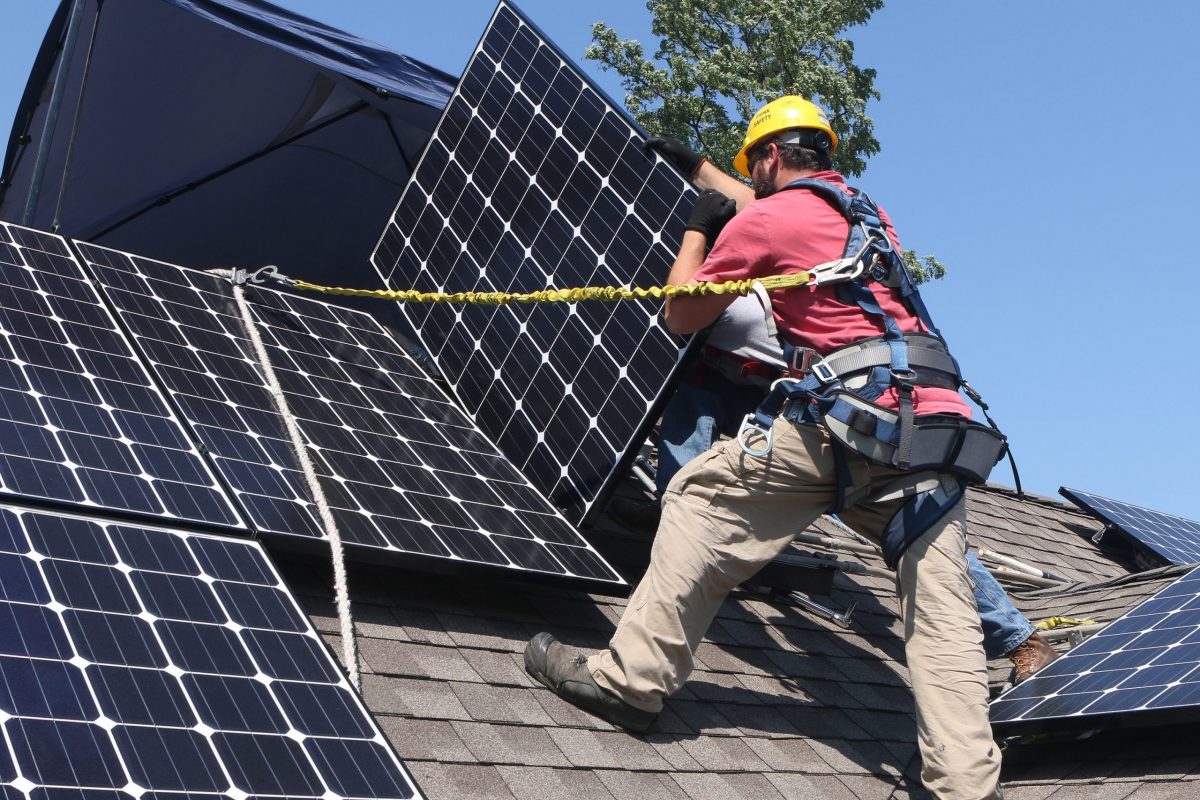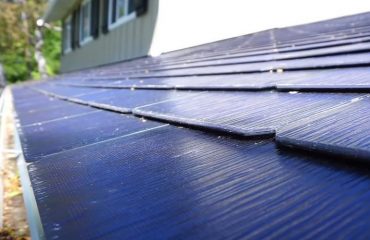Imagine powering your home with solar panels as flexible as plastic and as lightweight as fabric. Organic solar panels represent one of the most exciting recent solar cell breakthroughs, offering a revolutionary approach to harvesting solar energy. Unlike traditional rigid panels, these innovative devices use carbon-based materials to convert sunlight into electricity, making them bendable, ultra-lightweight, and perfect for surfaces where conventional panels won’t work. While their efficiency currently ranges from 8-12% compared to traditional panels’ 15-20%, organic solar technology promises to transform how we integrate solar power into our daily lives – from curved rooftops to window coverings and even clothing. For homeowners seeking sustainable energy solutions that combine versatility with cutting-edge technology, organic solar panels open up exciting new possibilities for powering our homes while reducing our carbon footprint.
What Makes Organic Solar Panels Different?
The Science Made Simple
Think of organic solar cells as tiny power plants made from natural materials, similar to the way plants convert sunlight into energy. These cells contain special organic compounds – molecules based on carbon – that get excited when sunlight hits them. When this happens, they create a flow of electricity, just like traditional solar panels.
The key difference is in the materials used. While conventional solar panels use rigid silicon, organic solar cells use flexible organic molecules that can be printed like ink onto various surfaces. Picture a leaf absorbing sunlight – organic solar cells work in a similar way, with layers of organic materials capturing different parts of the solar spectrum.
These cells have two main layers: one that gives up electrons when hit by sunlight, and another that receives these electrons. When sunlight strikes the first layer, it creates a flow of electricity that we can harness for power. The organic materials used are incredibly thin – about 1/1000th the thickness of a human hair – which is why these panels can be so lightweight and flexible.
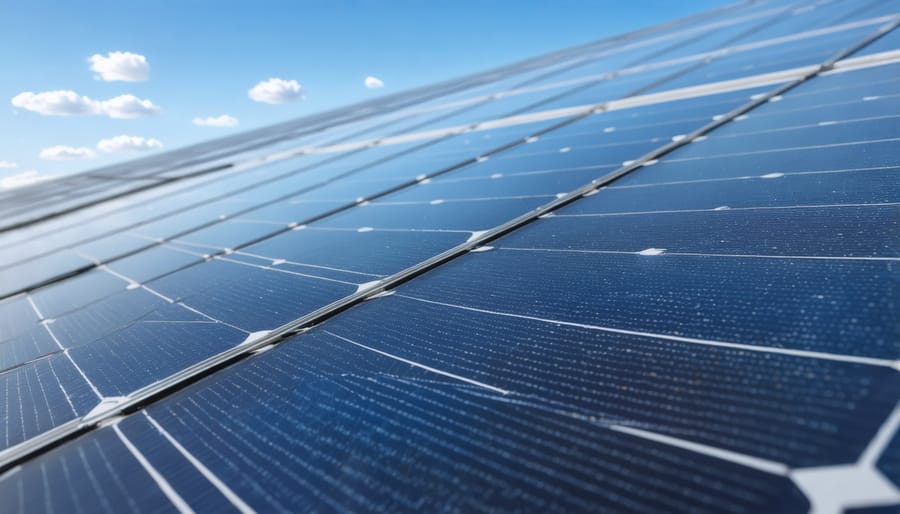
Key Benefits for Homeowners
Organic solar panels offer several compelling advantages for homeowners looking to embrace sustainable energy solutions. Their lightweight and flexible nature makes installation significantly easier and less invasive compared to traditional panels, reducing both labor costs and structural requirements. These innovative panels can conform to various roof shapes and surfaces, opening up installation possibilities on curved or irregular surfaces where conventional panels wouldn’t fit.
The aesthetic appeal of organic solar panels is particularly noteworthy, as they can be manufactured in different colors and transparency levels, allowing them to blend seamlessly with your home’s architecture. This feature addresses a common concern among homeowners about the visual impact of solar installations on their property’s appearance.
Maintenance costs are typically lower due to the simpler technology involved, and the panels’ durability in low-light conditions means they can generate electricity even on cloudy days. For budget-conscious homeowners, organic solar panels often present a more affordable entry point into solar energy, with lower initial investment requirements compared to traditional silicon-based systems. Additionally, their eco-friendly manufacturing process and materials align perfectly with sustainable living goals, reducing your home’s carbon footprint from day one.
Flexibility Meets Function
Creative Installation Options
Organic solar panels offer exciting installation possibilities that traditional rigid panels simply can’t match. Their flexible nature allows them to conform to curved roofs, rounded architectural features, and unconventional surfaces. Homeowners can install these versatile panels on dome-shaped structures, barrel-vault roofs, or even curved walls without compromising efficiency or aesthetics.
The lightweight and bendable characteristics of organic solar panels make them perfect for integration into unique home designs. They can be seamlessly incorporated into skylights, window coverings, and even decorative awnings, transforming everyday features into energy-generating elements. For homes with limited roof space, these panels can be installed on vertical surfaces or wrapped around columns, maximizing energy collection in previously unusable areas.
Creative installation options extend beyond traditional mounting methods. Organic solar panels can be integrated into garden structures like pergolas and gazebos, providing both shade and power generation. They’re also ideal for curved tiny homes, RVs, and boat surfaces, where conventional panels would be impractical.
For modern homes with unconventional architecture, these panels can follow the natural flow of design elements, maintaining the building’s aesthetic appeal while adding sustainable energy production. This adaptability makes organic solar panels a perfect choice for homeowners who want to combine style with functionality.

Beyond Traditional Rooftop Panels
Organic solar panels are revolutionizing how we think about solar integration in home design. Unlike traditional rigid panels, these flexible solutions can be incorporated into various architectural elements, creating a seamless blend of functionality and aesthetics.
Window treatments are one exciting application, where transparent organic solar films can be applied directly to existing glass surfaces. These films allow natural light to pass through while capturing solar energy, effectively turning your windows into power generators without compromising their primary function.
Building facades present another innovative opportunity. Organic solar panels can be integrated into exterior cladding materials, creating energy-producing walls that maintain the home’s architectural integrity. Some manufacturers now offer solar shingles and tiles that look identical to traditional roofing materials but generate power throughout the day.
Even outdoor living spaces can benefit from organic solar technology. Solar awnings and pergolas not only provide shade but also generate electricity, while decorative garden features like solar-powered lighting elements can be self-sustaining through integrated organic panels.
For those considering home renovations, organic solar solutions can be incorporated into balcony railings, carport covers, and even outdoor furniture, maximizing every surface’s potential for energy generation while maintaining visual appeal.
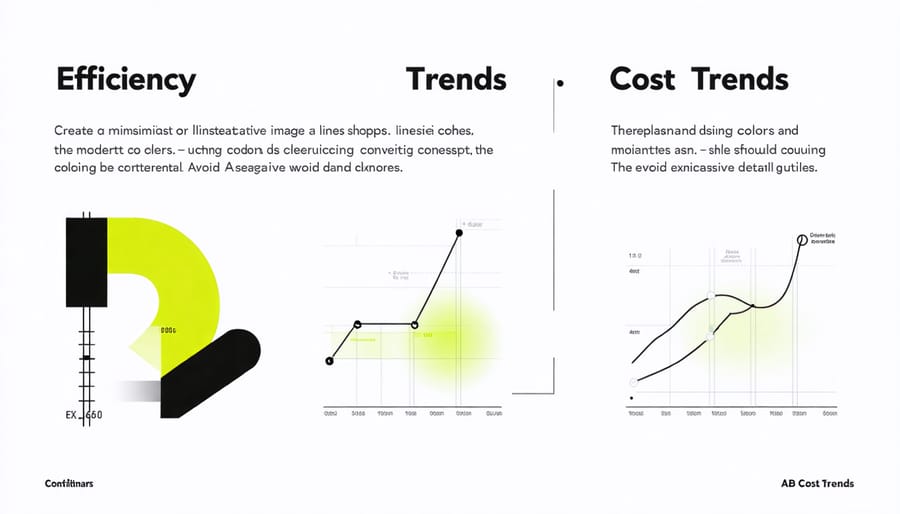
Cost and Efficiency: What You Need to Know
When it comes to organic solar panels, cost and efficiency are two crucial factors that homeowners need to consider. Currently, organic solar panels typically achieve efficiency rates between 5-12%, which is lower than traditional silicon panels that reach 15-20%. However, this gap is steadily narrowing as research into affordable solar technologies continues to advance.
The real advantage of organic solar panels lies in their production costs. Manufacturing these panels requires less energy and cheaper materials compared to conventional solar panels, which translates to lower upfront costs for homeowners. Additionally, the flexible nature of organic panels means they can be produced using roll-to-roll printing techniques, similar to newspaper printing, further reducing manufacturing expenses.
While the initial investment might be lower, it’s important to understand that you may need more organic panels to generate the same amount of power as traditional panels due to their current efficiency rates. However, their ability to perform well in low-light conditions and capture indirect sunlight can help offset this limitation in many real-world applications.
The cost-benefit equation becomes particularly attractive when considering installation on curved surfaces or areas where traditional panels wouldn’t be practical. Organic panels’ lightweight nature also means reduced structural requirements and installation costs, making them an increasingly viable option for homeowners looking to go solar.
Looking ahead, experts predict that efficiency rates will continue to improve while production costs decrease, making organic solar technology increasingly competitive with conventional options. For homeowners considering solar power today, organic panels represent a promising balance between affordability and functionality, especially for properties with space constraints or unique architectural features.
The Future of Home Solar
The future of organic solar technology holds exciting possibilities for homeowners looking to embrace sustainable energy solutions. As research continues to advance, we’re seeing promising developments in emerging photovoltaic materials that could revolutionize how we power our homes.
Experts predict that within the next five years, organic solar panels will achieve efficiency rates comparable to traditional silicon panels while maintaining their unique advantages of flexibility and lightweight design. This improvement, coupled with decreasing production costs, will make organic solar solutions increasingly accessible to homeowners.
One of the most promising developments is the integration of organic solar technology into building materials. Imagine windows that generate electricity while letting in natural light, or roof shingles that double as solar collectors. These innovations will allow homeowners to incorporate solar power without compromising their home’s aesthetic appeal.
Environmental benefits will also expand as manufacturers develop more sustainable production methods and improve recycling capabilities. This means future organic solar installations will have an even smaller carbon footprint than current options.
Smart home integration is another exciting frontier. Next-generation organic solar systems will seamlessly connect with home automation technologies, allowing homeowners to optimize their energy usage and storage in real-time. This integration will make it easier than ever to maximize solar power benefits while reducing energy bills.
As these technologies mature, we can expect to see more versatile applications, improved durability, and enhanced performance in various weather conditions. This evolution will make organic solar panels an increasingly attractive option for environmentally conscious homeowners seeking sustainable energy solutions.
Organic solar panels represent an exciting frontier in renewable energy technology, offering a promising path toward more sustainable and accessible solar power. Their unique combination of flexibility, lightweight design, and eco-friendly materials makes them particularly appealing for homeowners looking to reduce their carbon footprint while maintaining aesthetic appeal. While the technology is still evolving, ongoing research and development are continuously improving efficiency rates and durability, bringing us closer to widespread adoption.
As we face increasing environmental challenges, organic solar panels offer a glimpse into a future where clean energy technology seamlessly integrates with our daily lives. Whether installed on curved surfaces, incorporated into windows, or applied as thin films on existing structures, these innovative panels are breaking down traditional barriers to solar adoption.
For homeowners considering solar energy, keeping an eye on organic solar panel developments could prove worthwhile. As the technology matures and becomes more commercially available, it could revolutionize how we think about and implement residential solar power. By staying informed and open to these advances, we can all play a part in shaping a more sustainable energy future.

